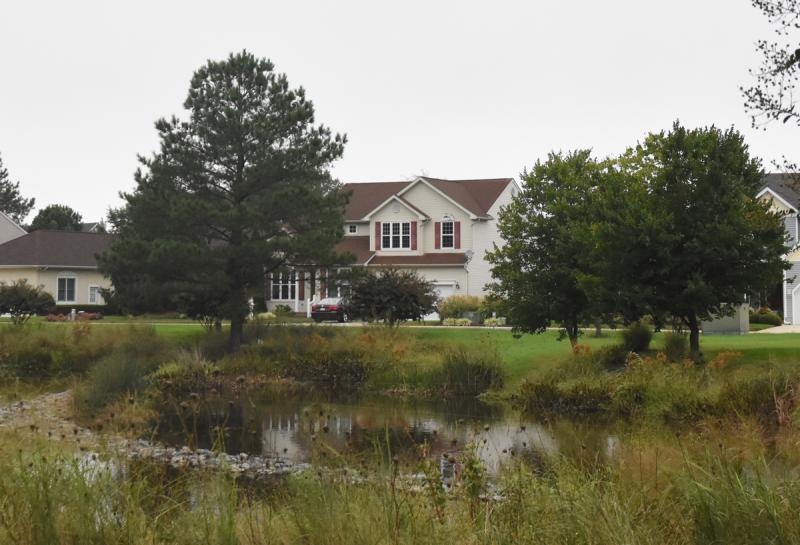Proposal for wetland buffers doesn’t hold water in Lewes
A plan to require a 50-foot buffer from all wetlands was not received well by Lewes Mayor and City Council at its Sept. 10 meeting.
City officials were considering whether to schedule a public hearing about the item, which was recommended unanimously by the city’s nine-member planning commission a week earlier.
Councilman Dennis Reardon said the proposed ordinance was not thought out enough before being forwarded to council. He said it could have a substantial effect on the residents of Lewes Beach, where wetlands closely border dozens of lots, particularly along Cedar Street and Cape Henlopen Drive.
“This would create a situation where they could not use their properties,” Reardon said. “They might be grandfathered in, but if they wanted to reconstruct or anything along those lines, they would lose that status.”
Tom West, the city’s planning and development coordinator, said wetland buffers are encouraged in the city’s comprehensive plan. The idea originated from the city’s hazard mitigation plan in 2011, he said.
Sussex County Council is considering requiring wider buffers as part of its comprehensive plan update. The county’s existing buffer is 50 feet for tidal wetlands, but no buffer is required for nontidal wetlands.
Kent and New Castle counties require 100-foot buffers from tidal wetlands. Kent requires 25-foot buffers for nontidal wetlands; New Castle requires 50 feet.
Deputy Mayor Fred Beaufait said just because the county is considering wider buffers doesn’t mean Lewes has to as well.
“To do this, I think you need some very, very compelling arguments because you’re talking about property rights,” he said. “I think we have to be careful when you take away property rights of property owners, whether they be the owner of 30 acres or the owner of a half acre.”
Councilwoman Bonnie Osler said she’s concerned about a lack of understanding for the need of wetland buffers.
“What exactly are the benefits?” she asked. “It makes intuitive sense that there are benefits. Are [the benefits] realized by 5 feet, 10 feet, 25 feet, 30 feet? What is the answer specific to Lewes?”
Council sent the topic back to the planning commission with instructions to do more research before resubmitting to council. Mayor Ted Becker said the commission should tap the University of Delaware’s Sea Grant program and former DNREC shoreline and waterway administrator Tony Pratt, who is working with the Association of Coastal Towns group.
Planners want buffer
At the planning commission’s Sept. 6 meeting, Building Official Henry Baynum expressed concern with individual properties bordering wetland areas, particularly when someone seeks to redevelop the property. He said a 100-foot lot backing up to the marsh would have a difficult task meeting the 50-foot wetland buffer and the 25-foot front-yard setback.
“You’ve just adversely affected that guy’s property,” he said.
Commissioner Kay Carnahan said there has been a desire to add wetland buffers for many years, but officials always get hung up on the impact on property owners. She asked the group to consider a fee property owners could pay to build within the 50-foot buffer area. She said the state of Maryland has a similar approach.
“We’ve always become stuck on [buffers],” Carnahan said. “For years we’ve gotten nowhere. I would prefer we get somewhere on this issue. [Fee in lieu] was the direction we could go to at least move forward, recognizing that on a single lot, yeah, it’s going to make it unbuildable, so we have to do something.”
Osler, who sat in on the meeting, said she was not in favor of offering property owners an out when it comes to complying with buffers.
“To me, that’s just like the density bonus the county offers,” she said. “You still end up with all that density and the fee goes who knows where.”
In a situation where setbacks and buffers make building impossible, Commission Chairman Drew McKay recommended the city include language to make an exception in extraordinary cases.
“If we say 50 feet unless it would deny reasonable use of the affected property, then the buffer could be reduced, perhaps no more than 50 percent or what the commission decides,” he said. “It doesn’t give us a fee, but it does give us some buffer.”
The commission agreed to the language and forwarded it to council. Now that it’s back on their table, commissioners will continue work on the issue at upcoming meetings.
Buffer averaging
Commissioners also recommended a 50-foot average buffer be added for major subdivisions, where a developer could build closer to wetlands in some areas, but farther away in others.
“Just setting at certain distance can work, but it’s somewhat arbitrary,” West said. “Sometimes you may have terrain that’s within 20 feet of a wetland that’s draining the other way, and if you buffer it, it doesn’t have the same effect. We think this makes a lot of sense.”
Carnahan said averaging was a good idea. She said it likely would have resulted in a better plan for the Mariner’s Retreat property, formerly known has Highland Heights, being constructed in the Fourth Street Forest. The 18.5-acre parcel was approved for 34 single-family homes in May 2016. Site work for the development recently began.
“Something that was on my mind the whole time was how could this be better? How could this be more imaginative?” Carnahan said. “I think that would’ve helped with all the cul-de-sacs and all that.”
Carnahan was one of the six members of the planning commission to vote to recommend denial of the development plan in 2016.

















































